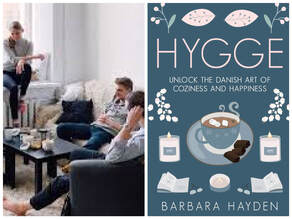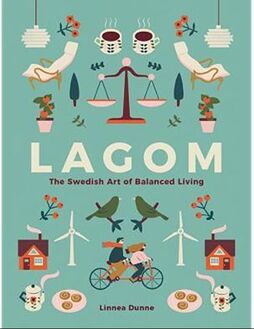 It was truly a Mr. Rogers kind of day. In recent weeks I feel like I have lost some of my cool and tolerance for the current lockdown. I did get vaccinated which feels like a get out of jail card. That gives me more hope for sooner than later. What added to my intolerance was an unexpected heat wave. I do not do well in hot weather. This blast came on so suddenly, the body didn’t get a chance to adapt. Consequently, I was feeling rather sick throughout the spell. I pretty much languished the entire stretch of hot and humid days with the vapors (at least that’s what they called it a couple of centuries ago) and less than stellar brain function. Then a real blessing occurred. My BFF who lives about a 20 minute ride from me, had an appointment in our favorite neighborhood. I haven’t seen her in 15 months. D also was vaccinated which made an easier decision to meet in person, still sporting masks. You can’t be too careful. We did a couple of errands, purchased a couple of sandwiches and found a bench right outside of a Starbuck’s. I haven’t had a Starbuck’s coffee in a long time so purchasing one was a real treat. I had brought disinfectant wipes, lots of hand sanitizer and even some gloves just in case. We felt quite safe to picnic on that bench. What made this such a positive experience from the get go was a big change in the weather. The temperature dropped considerably and the humidity was gone. I felt like myself again. Picnicking on that bench, enjoying maybe the best Starbuck’s coffee ever, having in person conversation, lots of sunshine, a cool, gentle breeze and for an hour or so life was normal. This definitely qualified for a do again. This leads me to talk about savoring positive experiences and some of the benefits. Savoring is the noticing and appreciation of the positive things in our lives, and then the decision to intentionally enjoy them for as long as possible. Savoring leads to improvements in our overall health and well-being. When we attend to positive feelings and emotions, our bodies are flooded with “feel-good” neurotransmitters like dopamine and serotonin that reduce stress and calm our nervous systems. Savoring positive emotions propels us on a trajectory of experiencing more positive emotions which creates an upward spiral and can lead to more happiness. Savoring also leads to increased gratitude and appreciation. When experiencing an event that brings joy, delight and goodness, take the time to dine out on all of the positive aspects in which you participated, whether a receiver or a giver. The benefits will be palpable. Comments are welcomed.
0 Comments
 If any of you have read my blogs, you have likely surmised that I am not 6 years old. Yet, I seemed to have found a new level of lock-down loopy. I needed some band-aids, but was unable to go to the larger pharmacy which has my favorites in boxes of 100. There is a small pharmacy across the street from where I live. I went there to get a small amount to hold me over. You’d think that would be a quick, straightforward event. Nope. Here’s where my pandemic psyche and the paradox of choice took over. If you are unfamiliar with the ’paradox of choice,’ it is written about in a book of the same title by psychologist Barry Schwartz. Schwartz explains how too many choices leads to more anxiety and disappointment. My band-aid mission followed suit. I thought my want was simple. I was looking for a small quantity of all one size, ¾ inch band-aids. When I got to the band-aid section there was an explosion of sizes, shapes, quantities, various material options- long ones, short ones, round ones, wide ones skinny ones, fibre ones, plastic ones, boxes of 50 or 30 or 80. With all of that there were no boxes of ¾ inch, all one size band-aids. Too many choices. Too many choices of not what I wanted. I suddenly felt like that old song that goes – bewitched, bothered and bewildered. Being suddenly paralyzed and irritated over choosing band-aids is symptomatic of an extended lock-down with very reduced social interaction. Well, I couldn’t continue to stand immobilized with a blank expression on my face. I simply had to make a selection and get the heck out of there. Just as I was about to settle on a small box of 2 sizes, one of which was the right width, something magical happened. This smallish box appeared. It contained 30 band-aids, all one size, ¾ of an inch. I grabbed it. Upon closer examination, I began to smile. This was no ordinary box of band-aids. No ma’am. No sir. These little gems came in a variety of colors. There were yellow ones, green ones, blue ones, light blue ones, red ones. Maybe they were intended for kids, but they were just what I needed to tickle my whimsy bone and imagination. I could color coordinate with my clothing or color clash if I fancied. This pandemic and lock-down may have caused me to reach a new level of crazy, but we just have to find some fun and humor whenever, where-ever possible. Today I am sporting a sunshiny yellow one. Comments are welcomed.  Last week I wrote about happiness and expectations. Two practices, hygge in Denmark and lagom in Sweden were noted as constructs for well being in those countries. Hygge has actually become more wide spread in recent years. I thought I would do a deeper dive into hygge to give you a better picture of this recipe for happiness. Hygge is essentially drama-free togetherness time. It is cozying around, but more than that, it is being aware that that cozy time is sacred—and treating it as such. Because Danes see hygge as such a fundamental aspect of good living, they all work together to make it happen. Hygge is “we time,” not “me time” Try to imagine going to a drama-free family gathering. There are no divisive discussions about politics, family issues, or Aunt Jenny’s dysfunctional kids. No snide comments, complaining, or heavy negativity. Everyone helps out, so that not one person gets stuck doing all the work. No one brags, attacks anyone, or competes with another. It is a light-hearted, balanced interaction that is focused on enjoying the moment, the food, and the company. In short, a shelter from the outside world. Hygge is considered such a powerful factor in Danish happiness that some universities in the UK and the US have started offering courses on it. 5Rules for Hygge 1. Come as you are. Be yourself. Your real self. Let your guard down. You won’t be attacked on hygge turf and you won’t attack in turn. When we strip ourselves of trying to prove something we can all connect in a much more real way. Competition, boasting, and pretense are not bonding, but rather subtly dividing. 2. Forget the controversy. If your topic is too serious, divisive or controversial, it probably isn’t hyggeligt, Hygge is about a balanced ebb and flow of discussion in a lighthearted way. The focus is on the moment and being in the moment. We have plenty of time in our everyday lives to argue and debate and experience drama but hygge is about enjoying the food, the company and not getting caught up in things that take away from that. Thus, complaining, heavy negativity, judging and arguing are not allowed in the hygge space. 3. Think of yourself as a team member. Everyone sees what he or she can do to contribute, without being asked. This makes the whole team flow better and no one gets stuck doing all the work. When everyone works together in preparing, serving, pouring, and conversing, then hygge is in full bloom. But everyone has to understand that they are part of that team. 4. See hygge as a shelter from the outside. Hygge time is about providing a temporary shelter from social climbing, networking, competition, and materialism. A place where everyone can relax and open their hearts without judging, no matter what is going on in their life. For better or for worse, this place is sacred and problems can be left outside. This is special because it allows for families and friends to always be able to connect in this space without fear of judgment. 5. Remember it is time limited. Making hygge can be challenging for a non-Dane. No one taking centre stage, no one bragging or complaining, no one being too negative and everyone trying to be present without arguing? This is hard to do for a lot of families! But the payoff is enormous. It feels incredible to share these drama-free moments with those you care about. If you realize that it is only for a dinner or a lunch or a limited period of time, it makes it much easier to really try and enjoy that moment. Your problems will be waiting for you outside hygge’s door when you leave. But for a little while they can wait outside for the sake of the something bigger.4 Comments are welcome.  How often have you had expectations of yourself or others that ended up in disappointment? I figured out several years ago that having realistic standards and living true to my values led to a greater sense of well being. While I still find myself having expectations, I try to keep them low key. That seems to minimize disappointment. Where does happiness come into this picture? The answer may be different for each person, depending on their definition of happiness. I recently read an article on this very subject by Trudy Boyle. I’ve included a portion of that article here. “We are often taught to have high expectations of ourselves and others and as a consequence we are frequently disappointed. The reality of life is that we can’t do everything, be everything or have everything. The secret lies in having reasonable expectations and going after those. This doesn’t mean low standards, rather it means realistic standards. Especially when it comes to others. The Scandinavians score high on the world happiness index year after year. The word that might best describe this phenomenon is not the popular hygge (pronounced hooga) (a quality of coziness and comfortable conviviality that engenders a feeling of contentment or well-being) but lagom. According to a recent article in SLATE, The Grim Secret to Nordic Happiness: “…lagom, the Swedish and Norwegian term which can be translated as “just the right amount,” i.e., neither too much nor too little explains the cultural ingredient (of happiness). Similar to hygge in Denmark, lagom is frequently thought to capture the essence of Swedish culture—its embracement of modesty and rejection of excess—but, in reality, these values characterize the entire Nordic region, and most certainly Finland. In terms of expectations for a good life, lagom encourages contentment with life’s bare necessities. If you already have those, you have nothing to complain about. Ergo, you are happy.” What describes happiness for you? Is it contentment, a sense of meaning and purpose, helping others, spending time in nature? That is for each one of us to answer for ourselves. Of course, however each one of us defines our happiness, we are right. Comments are welcome.  Adam Grant is a psychology professor at the Wharton School. He has written a number of NY Times best sellers. His latest book is Think Again, the power of knowing what you don’t know. Now that you know who he is, I can tell you about an interview with him on a news program. He talked about what many of us are experiencing during the pandemic. It is languishing. He wrote an article which appeared in the NY Times doing a deep dive on languishing. I’ve taken excerpts from that article to share. “It wasn’t burnout — we still had energy. It wasn’t depression — we didn’t feel hopeless. We just felt somewhat joyless and aimless. It turns out there’s a name for that: languishing. Languishing is a sense of stagnation and emptiness. It feels as if you’re muddling through your days, looking at your life through a foggy windshield. And it might be the dominant emotion of 2021. ”You probably developed routines that eased your sense of dread. But the pandemic has dragged on, and the acute state of anguish has given way to a chronic condition of languish. In psychology, we think about mental health on a spectrum from depression to flourishing. Flourishing is the peak of well-being: You have a strong sense of meaning, mastery and mattering to others. Depression is the valley of ill-being: You feel despondent, drained and worthless. “Languishing is the neglected middle child of mental health. It’s the void between depression and flourishing — the absence of well-being. You don’t have symptoms of mental illness, but you’re not the picture of mental health either. You’re not functioning at full capacity. Languishing dulls your motivation, disrupts your ability to focus, and triples the odds that you’ll cut back on work. “We still have a lot to learn about what causes languishing and how to cure it, but naming it might be a first step. It could help to defog our vision, giving us a clearer window into what had been a blurry experience. It could remind us that we aren’t alone: languishing is common and shared. And it could give us a socially acceptable response to “How are you?” Instead of saying “Great!” or “Fine,” imagine if we answered, “Honestly, I’m languishing.” It would be a refreshing foil for toxic positivity — that pressure to be upbeat at all times. When you add languishing to your lexicon, you start to notice it all around you. It shows up when you feel let down by your short afternoon walk. It’s in your kids’ voices when you ask how online school went. “So what can we do about it? A concept called “flow” may be an antidote to languishing. Flow is that elusive state of absorption in a meaningful challenge or a momentary bond, where your sense of time, place and self melts away. During the early days of the pandemic, the best predictor of well-being wasn’t optimism or mindfulness — it was flow. People who became more immersed in their projects managed to avoid languishing and maintained their pre-pandemic happiness. An early-morning word game catapults me into flow. A late-night Netflix binge sometimes does the trick too — it transports you into a story where you feel attached to the characters and concerned for their welfare. While finding new challenges, enjoyable experiences and meaningful work are all possible remedies to languishing, it’s hard to find flow when you can’t focus. “Focus on a small goal. The pandemic was a big loss. To transcend languishing, try starting with small wins, like the tiny triumph of figuring out a whodunit or the rush of playing a seven-letter word. One of the clearest paths to flow is a just-manageable difficulty: a challenge that stretches your skills and heightens your resolve. That means carving out daily time to focus on a challenge that matters to you — an interesting project, a worthwhile goal, a meaningful conversation. Sometimes it’s a small step toward rediscovering some of the energy and enthusiasm that you’ve missed during all these months.” Comments are welcome. |
Archives
July 2024
Categories
All
|

 RSS Feed
RSS Feed
